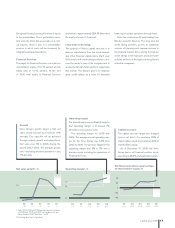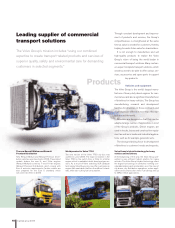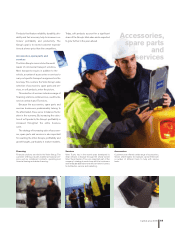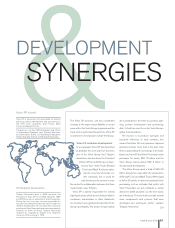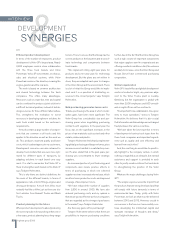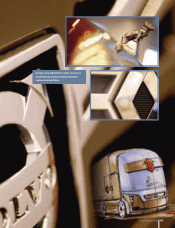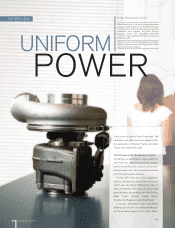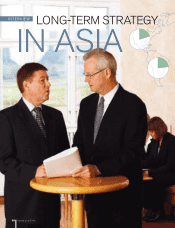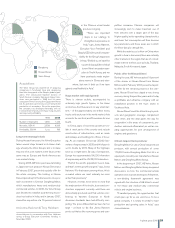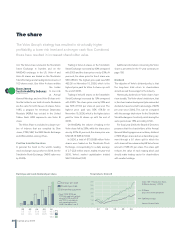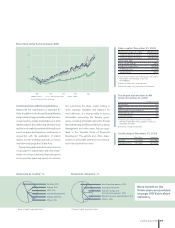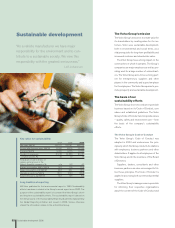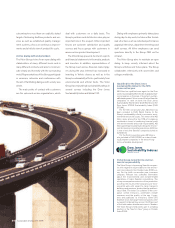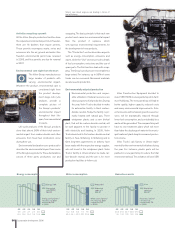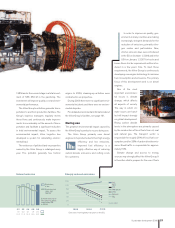Volvo 2006 Annual Report Download - page 31
Download and view the complete annual report
Please find page 31 of the 2006 Volvo annual report below. You can navigate through the pages in the report by either clicking on the pages listed below, or by using the keyword search tool below to find specific information within the annual report.
In 2001, the Volvo Group had 18 different
engine platforms ranging from 4 liters to 16
liters. The company knew that environmental
requirements would become increasingly
tough, but not what technology was the best
choice to meet the new requirements. Since it
was impractical to develop new technology for
18 different platforms, the Volvo Group decided
to concentrate on two platforms to meet the
legal requirements contained in US’10 and
18 2
Euro 6 standards, and to introduce the most
ad vanc ed t echnology possible to en hance qual-
ity, operating economy, fuel efficiency and per-
formance.
Today, the Group has two engine platforms: a
heavy one developed and produced by Volvo
Powertrain, and a medium-heavy one devel-
oped and produced in cooperation with Deutz.
Volvo Powertrain’s platform concept has
successfully been implemented for heavy gear-
boxes and axles.
Common engine platforms
Common strength
Create synergies Utilize synergies Results Advantages
Large base volume Broad product offering and optimal investments
Large volumes of components Low product cost
Common architecture Advanced engine development
Shared technology Enhanced quality, fewer item numbers
and higher efficiency
Common suppliers Lower costs and higher efficiency
Common
architecture
and shared
technology
More stringent emissions regulations are
also gradually being introduced for off-
road vehicles and marine applications. For
off-road vehicles the Tier 3 regulations are cur-
rently being introduced and the next major step
will be Tier 4, which comes into effect in 2011.
Alternative fuels and drivelines
The Volvo Group is working on parallel pro-
grams to meet environmental requirements
and reduce the need for fossil fuels. One pro-
gram ai ms to make engines r un more ef f iciently
on today’s fuels, while another is focusing on
finding alternative fuels. It is not a major prob-
lem to optimize diesel engines to operate on
other fuels. Rather, the problem is to produce
sufficient volumes of fuel and to distribute it. A
third program is focusing on alternative drive-
lines to complement diesel engines – hybrid
drivelines, for example.
“We have made considerable progress in
hybrid technology, and during 2006 we pre-
sented a hybrid solution for heavy vehicles that
gives fuel savings of up to 35 percent,” says
Jessica Sandström, in charge of ongoing hybrid-
development projects at Volvo Powertrain.
The new hybrid solution could be on the mar-
ket as early as 2009.
“Development is proceeding rapidly and we
are positioned to capitalize on all the advan-
tages that come from being a truly global com-
pany with world-leading technology and pro-
cesses,” says Lars-Göran Moberg.
A global group 2006 27


